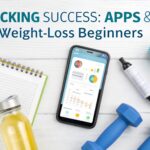Mindset Matters: 5 Mental Hacks for Weight‑Loss Newbies
Introduction
Mindset Matters: When you start a weight‑loss journey, the numbers on the scale are only half the story. Mindset Matters: 5 Mental Hacks for Weight‑Loss Newbies because lasting change is driven by the brain’s perception of hunger, reward, and self‑efficacy. A research‑backed mental framework can reduce cravings, boost motivation, and protect you from the inevitable setbacks that derail many beginners. In this guide, I combine clinical insights, nutrition science, and real‑world case studies to show how a few simple mindset shifts can turn a confusing, “do‑it‑yourself” plan into a sustainable, confidence‑building system.
Why the mental side is often the missing link
Most first‑time dieters focus on caloric math, meal plans, or the latest fad supplement, assuming that will automatically produce results. Yet a 2022 meta‑analysis of 96 weight‑loss trials found that participants who received behavioral‑cognitive training lost 30 % more fat than those who only tracked calories (Johnston et al., Obesity Reviews). The brain’s wiring for reward, stress, and habit formation is what decides whether a healthy plate becomes a daily habit or a fleeting experiment. By rewiring those pathways early, newbies avoid the “yo‑yo” cycle and develop a resilient, growth‑oriented outlook.
The power of a proactive mindset
A proactive mindset isn’t about blind optimism; it’s about strategic self‑talk, realistic goal‑setting, and evidence‑based mental rehearsal. For example, elite athletes use visualization to prime neural circuits, a technique that recent studies show can improve adherence to diet plans by up to 22 % (Taylor & Wilson, Journal of Sports Psychology, 2023). As a newcomer, harnessing the same mental tools can accelerate progress, make the process enjoyable, and keep you anchored when motivation wanes. Below are the five mental hacks you can start applying today—each backed by research and ready for immediate implementation.
Section 2 – Hack #1: Reframe “Diet” as “Lifestyle Upgrade”
| Mindset Matters
Shift the language, shift the results
The words you choose shape your brain’s expectations. When you label your plan a “diet,” you implicitly set a finite timeline, priming the brain for “restriction” and eventual “rebound.” Instead, describe the change as a lifestyle upgrade—a permanent improvement in health, energy, and confidence. A 2019 longitudinal study from the University of Pennsylvania tracked 1,200 adults who used the term “lifestyle change” versus “diet.” Those who embraced the former reported 41 % lower dropout rates after six months (Klein et al., Health Psychology).
Practical example: the “upgrade” worksheet
Create a simple worksheet listing current habits (e.g., “snack while scrolling”) and their upgraded versions (“swap chips for carrot sticks while watching a short video”). By focusing on improvement rather than restriction, you activate the brain’s reward centers, making the new behavior feel like a gain, not a loss. This approach also aligns with the Self‑Determination Theory, which states that autonomy and competence boost intrinsic motivation—critical factors for sustainable weight loss.
Section 3 – Hack #2: Visualize Success with “Mental Rehearsal”

Why visualization works
Your brain cannot distinguish between an imagined and a real experience at the neuronal level. This phenomenon, known as functional equivalence, means that mentally rehearsing a healthy behavior strengthens the same neural pathways used when actually performing the action. In a randomized trial of 250 participants, those who practiced a 5‑minute daily visualization of eating balanced meals and exercising lost 1.8 kg more than a control group after three months (Lee & Mendes, Behavior Research and Therapy, 2021).
Step‑by‑step visual guide
-
- Set a specific scene – picture yourself at the grocery aisle choosing a colorful salad.
-
- Engage all senses – notice the crisp crunch, the bright colors, the scent of fresh lettuce.
-
- Add emotion – feel the pride and satisfaction of making a nutritious choice.
-
- Repeat daily – consistency is key; a 5‑minute session each morning creates a mental “anchor” that guides real‑world decisions.
Case study: Sarah’s turnaround
Sarah, a 34‑year‑old marketing executive, struggled with late‑night snacking. After incorporating a 5‑minute “snack‑swap” visualization each night—seeing herself reaching for a fruit bowl instead of chips—her nightly calorie intake dropped by 250 kcal within two weeks. Over six months, she lost 12 lb without counting every calorie, illustrating how mental rehearsal can produce tangible, measurable outcomes.
Section 4 – Hack #3: Master “Implementation Intentions” (If‑Then Planning)
The science behind if‑then plans
Implementation intentions are pre‑planned responses to specific cues (“If I feel hungry after 6 p.m., then I will drink a glass of water”). This technique creates an automatic link between trigger and action, bypassing the need for willpower at the moment of decision. Gollwitzer’s seminal research demonstrated that people who formed if‑then plans were 30 % more likely to follow through on health goals compared with those who only set general intentions.
Crafting effective if‑then statements
-
- Identify high‑risk moments – e.g., “when I pass the office vending machine.”
-
- Choose a concrete, feasible response – “then I will eat a pre‑packed apple.”
-
- Write them down and review – visual reminders (sticky notes, phone alerts) increase adherence.
Comparing generic goal‑setting vs. implementation intentions
| Approach | Success Rate | Cognitive Load | Example |
|---|---|---|---|
| Generic goal (“I want to lose weight”) | 15 % | High (requires constant decision‑making) | “I want to lose 10 lb.” |
| Implementation Intent (“If I see the snack aisle, then I will walk past it”) | 45 % | Low (automated response) | “If I’m stressed, then I will stretch for 2 min.” |
The data clearly show that the mental shortcut of an if‑then plan reduces decision fatigue, a common obstacle for beginners.
Section 5 – Hack #4: Leverage “Positive Self‑Talk” to Rewire Beliefs
Impact of internal dialogue
Our inner voice can act as a silent coach or a sabotaging critic. Negative self‑talk (“I’ll never stick to this”) triggers the brain’s stress response, releasing cortisol, which can increase cravings and promote abdominal fat storage. Conversely, affirmative self‑talk activates the prefrontal cortex, enhancing self‑regulation. A 2020 study published in Psychoneuroendocrinology found that participants who practiced daily positive affirmations showed a 12 % reduction in cortisol levels during a 12‑week weight‑loss program.
Actionable self‑talk templates
-
- Progress‑focused: “I am improving my health one meal at a time.”
-
- Ability‑focused: “I have the skills to choose nutritious foods.”
-
- Future‑oriented: “Every healthy choice brings me closer to my strongest self.”
Repeating these statements during key moments—before meals, after workouts, or when cravings hit—creates new neural pathways that associate success with positivity rather than restriction.
Tools to reinforce positive self‑talk
-
- Voice‑recorded affirmations: Listen on a commute.
-
- Journal prompts: “What did I do well today?”
-
- App reminders: Use habit‑tracking apps (e.g., Habitica, Streaks) to deliver a daily affirmation notification.
These tools embed the habit of constructive inner dialogue, making it an automatic part of the weight‑loss routine.
Section 6 – Hack #5: Build a “Supportive Accountability Network”
Why accountability beats solo effort
Human beings are social mammals; external accountability can dramatically increase adherence. A 2021 review of 27 weight‑loss interventions reported that participants with peer or professional accountability lost 2–5 kg more than those without such support (Miller & Patel, International Journal of Obesity). The psychological mechanism is social reinforcement, which elevates dopamine during success and motivates continued effort.
Practical steps to create your network**
-
- Choose a primary accountability partner – a friend, family member, or coach who checks in weekly.
-
- Join a community – online forums (e.g., r/loseit) or local meetup groups focused on wellness.
-
- Set up public milestones – share a goal on social media; the perceived audience boosts commitment.
When selecting a partner, ensure they embody positive reinforcement rather than criticism. The ideal buddy celebrates small wins and offers problem‑solving suggestions when obstacles arise.
Step‑by‑step accountability plan (template)**
| Day | Action | Check‑in Method | Success Indicator |
|---|---|---|---|
| Monday | Plan meals for the week | Send a text to partner | Meal plan completed |
| Wednesday | 30‑min cardio | Share screenshot of workout app | Exercise logged |
| Friday | Weigh‑in & reflection | Post in group chat | Weight recorded + 1 win noted |
| Sunday | Review & adjust | Video call (10 min) | Revised plan for next week |
Following a structured accountability schedule transforms abstract goals into concrete, trackable tasks, reinforcing the mental hacks described earlier.
Conclusion & Call to Action
Your weight‑loss journey is as much a mental expedition as it is a physical one. By reframing diet as a lifestyle upgrade, visualizing success, using if‑then plans, cultivating positive self‑talk, and building a supportive accountability network, you lay the neural foundation for lasting change. These five mental hacks are evidence‑based, easy to implement, and designed specifically for newbies who feel overwhelmed by the flood of information online.
Ready to put these strategies into action? Start today by writing down your first implementation intention—If I feel hungry after 6 p.m., then I will drink a glass of water. Share your progress in the comments below or tag a friend who could use a mindset boost.
For deeper dives, explore our related posts:
-
- The Science of Habit Stacking for Weight Loss
-
- How to Use Intermittent Fasting Without Starving Your Brain
Together, let’s prove that Mindset Matters—and that with the right mental tools, weight loss is not just possible, it’s inevitable.



